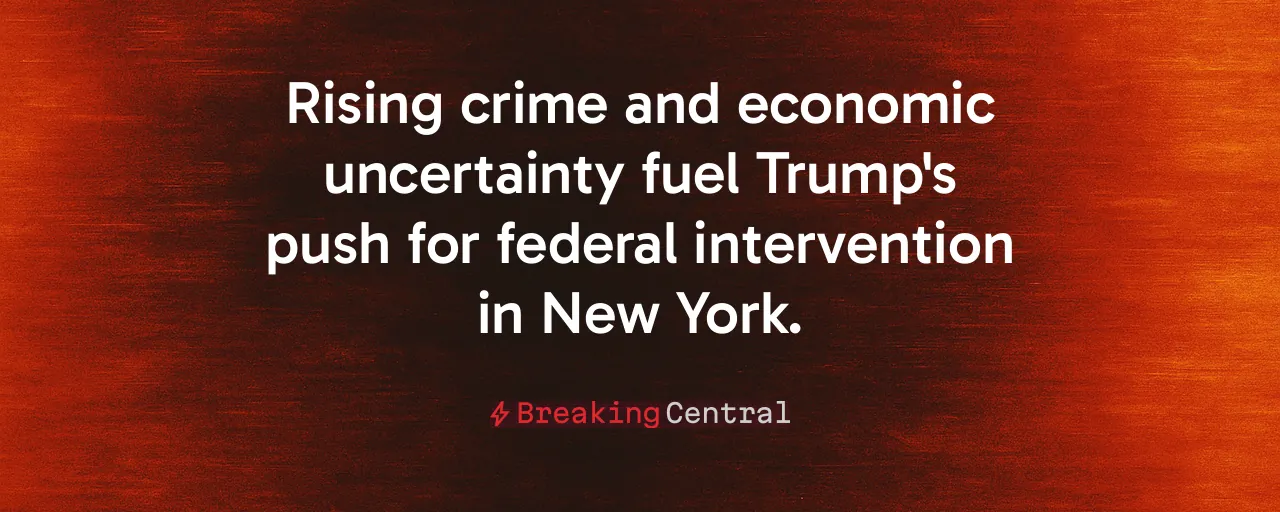A City at a Crossroads
President Donald Trump has ignited a firestorm with his bold promise to 'save' New York City from what he calls a 'Communist lunatic' leading its future. His target is Assemblyman Zohran Mamdani, the Democratic mayoral nominee whose primary victory in June 2025 sent shockwaves through the political landscape. Trump's rhetoric, delivered through Truth Social posts and fiery Fox News interviews, paints a city teetering on the edge of chaos, demanding federal intervention to restore its former glory.
New Yorkers, from taxi drivers to Wall Street brokers, are grappling with rising crime and economic uncertainty. Trump's pledge to make the city 'hot' and 'great' again resonates with those frustrated by recent trends. His approach, leveraging federal power to enforce immigration laws and potentially withhold billions in funds, raises questions about the balance between local autonomy and national priorities.
This clash is more than a personal feud. It reflects a deeper struggle over the soul of America's largest city. Will New York bend to federal demands, or will it double down on policies that prioritize local control? The stakes are high, with implications for public safety, economic stability, and the rule of law.
The Case for Federal Action
At the heart of Trump's strategy is a commitment to law and order. He argues that New York's refusal to cooperate with federal immigration enforcement undermines national security. Data from Immigration and Customs Enforcement shows a rise in non-criminal deportations when localities resist detainer requests. For Trump, this is evidence that sanctuary city policies shield lawbreakers and hinder effective law enforcement.
Crime statistics bolster his case. Felony assaults in New York City are roughly 40 percent higher than in 2019, a trend that alarms residents and business owners. Polls from Siena College reveal that a significant portion of voters, including independents, support stronger immigration enforcement to curb disorder. These numbers paint a city struggling to maintain safety, where federal intervention could restore confidence.
Trump's supporters see his approach as a necessary check on radical local governance. Policies like taxing billionaires or expanding city-run services, championed by Mamdani, risk driving away investment, they argue. Historical precedent supports this view: past progressive leadership in the 1970s led to fiscal crises and out-migration, leaving scars still felt today.
Economic Stakes in the Balance
New York City's $112 billion budget relies on federal grants for about 7 percent of its funding, covering schools, hospitals, and transit. Trump's threat to withhold these funds could disrupt critical services, from MTA subway upgrades to Medicaid reimbursements. His allies contend that savings from reduced crime and lower taxes could offset these losses, attracting businesses back to the city.
Investor confidence is already shaky. Municipal bond markets, sensitive to political uncertainty, could falter if federal-city tensions escalate. Research from conservative think tanks, like the Heritage Foundation, suggests that rolling back congestion pricing and easing regulations would boost economic activity, creating jobs and stabilizing the tax base.
The alternative, Trump warns, is a city spiraling toward decline. If local leaders prioritize ideology over pragmatism, New York risks becoming a cautionary tale for other urban centers. Federal leverage, in this view, is a tool to protect taxpayers and ensure accountability from officials who defy national laws.
A Historical Playbook
Trump's tactics echo past battles. During his first term, he clashed with New York over sanctuary city policies, attempting to cut federal grants in 2020. City lawsuits, backed by federal courts, blocked those efforts, citing unconstitutional overreach. Today's threats, including arrests of local officials, mark a bolder escalation, unprecedented in modern times.
History offers context. Previous mayors, like Rudy Giuliani, balanced local priorities with federal cooperation, often embracing aggressive policing to curb crime. Those strategies, credited with revitalizing New York in the 1990s, align with Trump's vision of decisive action. Periods of lax enforcement or fiscal mismanagement have left the city vulnerable, fueling calls for a return to disciplined governance.
Navigating the Legal Maze
Trump's plan faces legal hurdles. The Tenth Amendment protects local governments from being forced to enforce federal immigration laws, as established in Supreme Court cases like Printz v. United States. Withholding funds retroactively often fails in court, though the administration could target discretionary grants with new conditions. Litigation is inevitable, with New York's Attorney General Letitia James likely to lead the charge.
Still, the federal government holds significant power. Immigration enforcement falls under national authority, and Trump could expand ICE operations or redirect resources to pressure the city. The challenge lies in execution: large-scale deportations require personnel and detention space, both in short supply. Any misstep could spark public backlash or judicial injunctions, complicating the president's agenda.
A Vision for Renewal
Trump's pledge to save New York City hinges on a clear vision: prioritize safety, reward compliance, and unleash economic potential. By conditioning federal funds on cooperation with immigration enforcement, he aims to restore order and deter policies that invite chaos. Expanding federal jurisdiction and promoting aggressive policing could signal to investors that New York is open for business.
The path forward requires precision. Targeted agreements, like sharing data on violent felons, could bridge divides without alienating communities. Restoring discretionary funds in exchange for measurable cooperation offers a pragmatic way to align city and federal goals. These steps, rooted in accountability, aim to protect residents and taxpayers alike.
New York stands at a pivotal moment. Trump's bold stance challenges the city to choose between ideological defiance and practical renewal. For a city that once defined American ambition, the decision will shape its future and send a message to the nation: order and prosperity can prevail, but only with courageous leadership.
